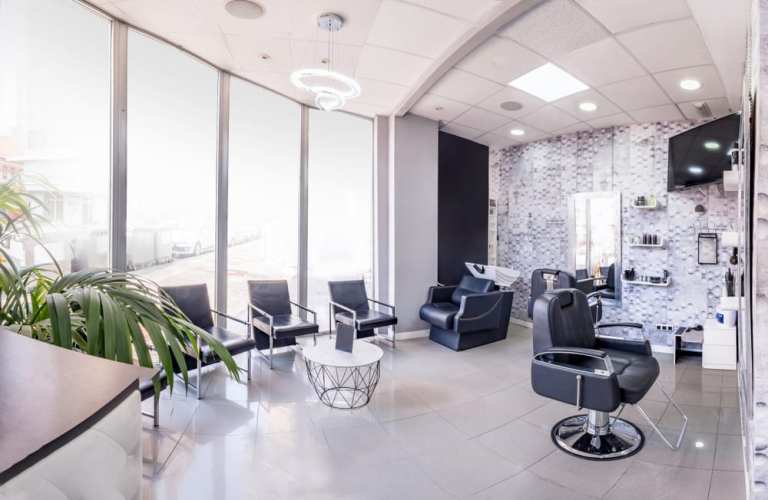
Although the health, beauty and wellness services industries tend to get lumped together, a closer look at the demands across these segments reveals there is no such thing as a one-size-fits-all solution that Software-as-a-Service providers can offer.
Take salons, for instance. Unlike, say, fitness centers, appointment-based businesses like hair and nail salons and spas are heavily built around the one-to-one relationship between stylist and client. And managing that relationship, according to Boulevard Chief Financial Officer Greg Wookey, has the potential to be heavily impacted — positively or negatively — by a salon’s back-office processes.
“That relationship between salon owner or stylist and their client is about ‘How do they make the client feel special?’” Wookey told Karen Webster in a recent interview. “It’s not just with the service they provide.”
It’s also about the client experience — from before any service is booked, to their experience within the salon itself, and through to payment and rebooking.
That’s very different than a fitness class or gym membership model.
“For salons, that one-to-one relationship is so imminent, and relationships are deeper than if you have a spin class with 30 people in it,” he noted.
Understanding the unique opportunities and challenges of salons reliant on one-to-one client relationships was the basis for the launch of Boulevard earlier this year. The company connects salons and other appoint-based businesses in the beauty industry with a range of services, including scheduling, payments and business intelligence analytics. What’s important to understand for this segment, Wookey noted, is that supporting the one-to-one relationship with technology means understanding that salons and stylists need choice in how they manage and interact with their clients.
The One-To-One Relationship
One of the biggest opportunities in the salon industry is for technology to facilitate elevated, custom human interactions between service providers and clients, with repeat clientele often as essential to salons’ margins as new customer acquisition.
Unique to this particular segment, said Wookey, is that salon owners need to be able to customize how they interact with their customers and incorporate those interactions to the rest of their back-office operations.
“We can help them improve efficiency of how they schedule appointments, how they get people in and out in a very high-touch way,” he said.
That means sitting seamlessly within the customer interaction from booking, through to payment and repeat booking.
But thinking beyond the salon itself, Wookey said he sees a vast array of opportunities for technology to further enhance the salon-customer experience even before or after that client steps in or out of the building. Connecting with technology conglomerates like Google or Amazon, for example, could connect potential new or past clients to appointment booking opportunities from directly within platforms those customers already use to search for salons or purchase beauty products their local salon may have in stock.
Even business models like subscriptions or on-demand food delivery show promise for this sector, he said, enabling clients to more easily book recurring appointments or order beauty products for delivery.
Widening the Margins
What’s essential to the salon market is for technology to simultaneously support an elevated customer interaction while also widening margins as much as possible.
Artificial intelligence, for example, is instrumental to minimizing the number of gaps in a stylists’ virtual appointment book. Payments technology that can offer a seamless, digital payments experience for a client can also enable enhanced financial analytics for salons, as well as the potential for real-time payouts for stylists (a feature Wookey said Boulevard is exploring).
Although the industry is ripe for technological disruption, Wookey noted that — just like any customer segment — there are significant hurdles to overcome when convincing a business to replace existing processes and software products that may not be providing the level of service that salon needs.
“That’s the fear they have, that there is going to be interruption to their business,” Wookey said of salon’s concerns over technology adoption. “With such low margins, their business can’t afford that.”
Streamlined (and accelerated) customer on-boarding is a must for this market to overcome its tech adoption concerns, but when it comes to designing software that can address salons’ unique challenges, that’s only the beginning.
Expansion Through Technology
Having only been out of stealth mode for a few months, Boulevard is focusing on those collaborative opportunities with other providers in both the technology and beauty sectors — two fields that have significant opportunity for overlap.
“If you think about the core business of software, there are tangents on the outside,” Wookey explained of the market’s cross-sell opportunities, whether it be through client discovery, product sales or payments.
“There are a number of tangents around payments,” he added. “A lot of opportunity.”
The ripest opportunities, though, will be the ones that can multitask, providing salon owners and stylists with easier ways of running their businesses, improving bottom lines, and fostering those one-to-one relationships between service providers and their clients that are so crucial to the salon segment.
“To the extent we can create partnerships to improve the platform for our customers, that’s how we prefer to think about it,” said Wookey. “The salon owner can either spend time on a customer, or spend time on administrative tasks.”